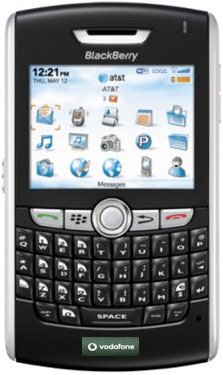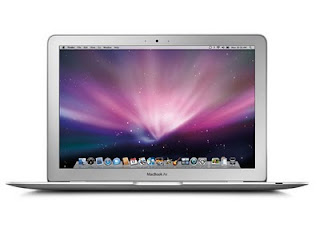The good: The Canon EOS Rebel T3i delivers excellent video capabilities and image and video quality.
The bad: If you shoot both still and video, the T3i's controls can be frustrating to operate, and it's not terribly fast for burst shooting sports, kids, or pets.
The bottom line: For the money, the Canon EOS Rebel T3i is a great choice for dSLR videographers--though the cheaper T2i can still suffice if you don't need the articulated LCD--and it's a solid choice for creative still shooters. But though the image quality and general shooting performance are top-notch, if you're upgrading to capture sports, kids, or pets, the T3i may not be able to keep up.
That's not to say it compromises on still photo quality. Overall, the T3i has an excellent noise profile, unsurprisingly similar to that of the 60D's. JPEGs look very clean up through ISO 400, and even at ISO 800 you really have to scrutinize to see the beginnings of detail degradation; at ISO 1,600 the noise becomes more obvious but still isn't too bad.
ISO 400 is sort of my tipping-point sensitivity; to shoot action outdoors, I generally have to bump up the setting to at least ISO 400 in order to reach a sufficiently fast shutter speed. And because few consumer cameras are fast enough at shooting burst raw+JPEG, the in-camera JPEG processing has to be decent as well. The T3i fared pretty well under these conditions. Overall, I consider shots at this setting good enough to use, but I still wish I would have been able to shoot raw to clean them up.
Canon's JPEG processing remains very good. Even at ISO 1,600 I couldn't obtain unambiguously better results processing the raw--Canon seems to optimize for exposure at the expense of sharpness, and I couldn't get sharper results without losing some shadow detail (you may do better). At ISO 3,200 I was able to achieve a significant reduction in color noise without losing too much shadow detail. And by ISO 6,400, I started to see hot pixels as a side-effect of the in-camera noise reduction (those white spots) in the JPEGs.
On all other counts the photos looked good on the default settings, though my favored setting with Canon models is Neutral with sharpening bumped up a few notches. Colors look both relatively accurate and saturated; metering and exposures are consistent and predictable; and the dynamic range is broad enough to allow a reasonable amount of highlight and shadow recovery.
As usual, the video looks very good. There's some moiré, but not a lot of rolling shutter, and moving edges look surprisingly sharp. At its highest quality, it seems to deliver an average bit rate of roughly 45Mbps. It offers the same great set of frame rates and manual exposure controls as the 60D, including highlight tone priority for fine-tuning high-key exposures. Though the built-in microphone is mono, it sounds surprisingly good, and there's a wind filter along with the same 64-level sound controls. Canon also incorporates the Video Snapshot feature from its camcorders--it lets you snap up to 8-second clips--and some in-camera special-effects filters, too.
| Canon EOS Rebel T1i | Canon EOS Rebel T2i | Canon EOS Rebel T3i | Canon EOS 60D | |
| Sensor (effective resolution) | 15.1-megapixel CMOS | 18-megapixel CMOS | 18-megapixel CMOS | 18-megapixel CMOS |
| 22.3 x 14.9mm | 22.3 x 14.9mm | 22.3 x 14.9mm | 22.3 mm x 14.9mm | |
| Image processor version | Digic 4 | Digic 4 | Digic 4 | Digic 4 |
| Sensitivity range | ISO 100 - ISO 3,200/12,800 (expanded) | ISO 100 - ISO 6,400/ 12,800 (expanded) | ISO 100 - ISO 6,400/ 12,800 (expanded) | ISO 100 - ISO 6,400/ 12,800 (expanded) |
| Continuous shooting | 3.5fps 6 raw/53 JPEG | 3.7fps 6 raw/34 JPEG | 3.7 fps 6 raw/34 JPEG | 5.3fps 16 raw/58 JPEG |
| Viewfinder (mag/ effective mag) | 95% coverage 0.87x/0.54x | 95% coverage 0.87x/0.54x | 95% coverage 0.85x/0.53x | 96% coverage 0.95x/0.59x |
| Autofocus | 9-pt AF center cross-type | 9-pt AF center cross-type to f2.8 | 9-pt AF center cross-type to f2.8 | 9-pt AF all cross-type; center cross to f2.8 |
| Shutter Speed | 1/4,000 to 30 secs; bulb; 1/160 x-sync | 1/4,000 to 30 secs; bulb; 1/160 x-sync | 1/4,000 to 30 secs; bulb; 1/200 x-sync | 1/8,000 to 30 secs; bulb; 1/250 sec x-sync |
| Metering | 35 zones | 63-zone iFCL | 63-zone iFCL | 63-zone iFCL |
| Video | H.264 QuickTime MOV 1080/20p; 720/30p | H.264 QuickTime MOV 1080/24p/ 25p/30p; 720/50p/ 60p | H.264 QuickTime MOV 1080/24p/ 25p/30p; 720/50p/ 60p | H.264 QuickTime MOV 1080/30p/25p/24p; 720/60p/50p |
| Manual aperture and shutter in video | No | Yes | Yes | Yes |
| Audio | Mono | Mono; mic input | Mono; mic input | Mono; mic input |
| Maximum best-quality recording time | 4GB/12m | 4GB/12m | 4GB/11m | 4GB/12m |
| Image stabilization | Optical | Optical | Optical | Optical |
| LCD size | 3 inches fixed 920,000 pixels | 3 inches fixed 1.04 megapixels | 3 inches articulated 1.04 megapixels | 3 inches articulated 1.04 megapixels |
| Memory slots | 1 x SDHC | 1 x SDXC | 1 x SDXC | 1 x SDXC |
| Wireless flash | No | No | Yes | Yes |
| Battery life (CIPA rating) | 400 shots | 550 shots | 470 shots | 1,100 shots |
| Dimensions (WHD, inches) | 5.1 x 3.8 x 2.4 | 5.1 x 3.8 x 3.0 | 5.1 x 3.8 x 3.0 | 5.7 x 4.1 x 3.1 |
| Body operating weight (ounces) | 18.6 | 18.6 | 20 | 27 |
| Mfr. Price | $549 (est; body only) | $699.99 (est; body only) | $799.99 (body only) | $1,099.99 (body only) |
| $799.99 (with 18-55mm IS lens) | $899.99 (with 18-55mm IS lens) | $899.99 (with 18-55mm IS II lens) | $1,399.99 (with 18-135mm lens) | |
| n/a | $980 (est; with 18-135mm IS lens) | $1,099.99 (with 18-135mm IS lens) | n/a | |
| Release date | April 2009 | March 2010 | March 2011 | November 2010 |
The camera's performance remains fast, but, surprisingly, in some cases not quite as fast as its predecessor's. It powers on, focuses, and shoots in about 0.3 second, with a fast 0.3-second shot lag in good lighting and solid 0.6-second in dim (a tad slower than the T2i). JPEG shot-to-shot time is also good at about 0.4 second; raw takes a little longer at about 0.5 second. Adding flash bumps that up by another couple tenths of a second. Its burst rate is essentially equal to the T2i's, but both are at what I consider the slowest acceptable continuous-shooting speed for a dSLR and slower than less-expensive competitors like the Nikon D5000 or the Pentax K-x.
With a few exceptions, the T3i's body and interface are almost identical to the T2i's. It's slightly heavier (but not larger) thanks to the bright, flip-and-twist LCD. It feels sturdy, and though the texture rubberized grip feels kind of cheap, the camera is comfortable to hold and shoot single-handed, and can stand up to the weight of a good lens. I've never been a huge fan of the Rebel series' viewfinder, and this one is actually a slightly lower magnification than previous models. I don't know that I noticed the difference, but there are better ones out there. Also, I don't like the tiny, too-briefly-flashing AF points.
Canon carries over the control layout and user interface from the T2i, although it has moved the Display button to the top and replaced it with Info. Camera operation is straightforward. On the back there are direct-access controls for Live View/video recording, exposure compensation, white balance, autofocus method (single, AI focus and AI servo), drive mode, Picture Style, AE/AF lock, and focus area (single-point manual or all-points auto). You can also change these settings, plus metering, flash, image quality, and a few others, via the typical Quick Control screen. My one quibble here is that the buttons all feel a bit too flat.
The mode dial includes the usual set of manual, semimanual, automatic, and scene modes. It doesn't lock, which may bother some folks (though not me). As with the 60D, however, I find the placement of the movie mode--at the opposite side of the dial from the advanced modes--insanely frustrating. I've actually missed video opportunities by having to scroll around from shutter-priority mode to video. Ironically, this design is more suited to pros who plan to use the camera as a cheap video dSLR and never take it off the video setting than to the consumers at whom it's ostensibly targeted.
| Canon EOS Rebel T3i | Pentax K-r | Sony Alpha SLT-A55 | Sony Alpha DSLR-A580 | |
| Sensor (effective resolution) | 18-megapixel CMOS | 12.4-megapixel CMOS | 16.2-megapixel Exmor HD CMOS | 16.2-megapixel Exmor HD CMOS |
| 22.3 x 14.9mm | 23.6 x 15.8mm | 23.5 x 15.6mm | 23.5 x 15.6mm | |
| Focal-length multiplier | 1.6x | 1.5x | 1.5x | 1.5x |
| Sensitivity range | ISO 100 - ISO 6,400/12,800 (expanded) | ISO 100 (expanded)/200 - ISO 6,400/25,600 (expanded) | ISO 100 - ISO 1,600/12,800 (expanded) | ISO 100 - ISO 12,800/25,600 (expanded) |
| Continuous shooting | 3.7fps 6 raw/34 JPEG | 6fps n/a raw/25 JPEG | 6fps (10fps with auto exposure) 20 raw/35 JPEG | 5fps (7fps with auto exposure) 22 raw/45 JPEG |
| Viewfinder (magnification/ effective magnification) | Optical 95% coverage 0.85x/0.53x | Optical 96% coverage 0.85x/0.57x | Electronic 0.46 inches/1.2 million dots 100% coverage 1.1x/0.73x | Optical n/a 95% coverage 0.80x/0.53x |
| Autofocus | 9-pt AF center cross-type to f2.8 | 11-pt AF 9 cross-type (SAFOX IX) | 15-pt phase-detection AF 3 cross-type | 15-pt phase-detection AF 3 cross-type |
| Shutter Speed | 1/4,000 to 30 secs; bulb; 1/200 x-sync | 1/6,000 to 30 secs; bulb; 1/180 sec x-sync | 1/4,000 to 30 secs; bulb; 1/160 x-sync | 1/4,000 to 30 secs; bulb; 1/160 x-sync |
| Metering | 63-zone iFCL | 16 segment | 1,200 zone | 1,200 zone |
| Video | H.264 QuickTime MOV 1080/24p/25p/30p; 720/50p/60p | 720/25p Motion JPEG AVI | AVCHD 1080/60i @ 17Mbps; H.264 MPEG-4 1440x1080/30p @ 12Mbps | AVCHD 1080/60i @ 17Mbps; H.264 MPEG-4 1440x1080/30p @ 12Mbps |
| Audio | Mono; mic input | Mono | Stereo; mic input | Stereo; mic input |
| Manual aperture and shutter in video | Yes | n/a | Yes | Yes |
| Maximum best-quality recording time | 4GB/12 minutes | 4GB/25 minutes | 2GB/9 minutes | 2GB/14 minutes |
| Image stabilization | Optical | Sensor shift | Sensor shift | Sensor shift |
| LCD size | 3 inches articulated 1.04 megapixels | 3 inches fixed 921,000 dots | 3 inches articulated 921,600 dots | 3 inches articulated 921,600 dots |
| Memory slots | 1 x SDXC | 1 x SDXC/SDHC (SDXC requires firmware upgrade) | 1 x SDXC | 1 x SDXC |
| Wireless flash | Yes | Yes | Yes | Yes |
| Battery life (CIPA rating) | 470 shots | 560 shots (NiMH batteries) | 330 shots | 1,050 shots |
| Dimensions (WHD, inches) | 5.1 x 3.8 x 3.0 | 4.8 x 3.6 x 2.7 | 4.9 x 3.6 x 3.3 | 5.4 x 4.1 x 3.3 |
| Body operating weight (ounces) | 20 | 20.4 (est) | 17.8 | 24 (est) |
| Mfr. Price | $799.99 (body only) | n/a | $749.99 (body only) | $799.99 (body only) |
| $899.99 (with 18-55mm IS II lens) | $749.95 (with 18-55mm lens) | $849.99 (with 18-55mm lens) | $899.99 (with 18-55mm lens) | |
| $1,099.99 (with 18-135mm IS lens) | n/a | n/a | n/a | |
| Release date | March 2011 | October 2010 | September 2010 | November 2010 |
While Canon offers quite a few options for video shooters, it doesn't have much beyond the basics to inspire or streamline shooting for still photographers. The T3i supplies basic Eye-Fi wireless integration--you can enable or disable the card and the camera provides connection strength information. For bracketing, you're still limited to a three-shot bracket and a range of two stops around the center, though the complete range goes up to seven stops in either direction. And it supports wireless flash. But there's no way to save custom settings, no creative features like time-lapse or multiple-exposure shooting or filters (only a handful of postprocessing effects). Furthermore, with increasing resolutions, the ability to shoot raw plus small or medium JPEG--as opposed to full size--isn't just a pro necessity anymore, especially if you plan to transmit wirelessly. For a complete account of the T3i's features and operation, you can download the PDF manual.
Conclusion
For the money, the T3i is a great choice for dSLR videographers--though the cheaper T2i can still suffice if you don't need the articulated LCD--and is a solid choice for creative still shooters. But while the image quality and general shooting performance are top-notch, if you're upgrading to shoot sports, kids, or pets, the T3i may not be able to keep up.




0 comments:
Post a Comment